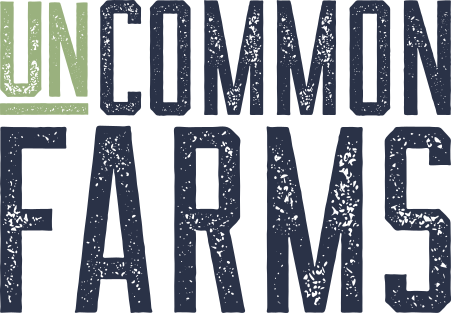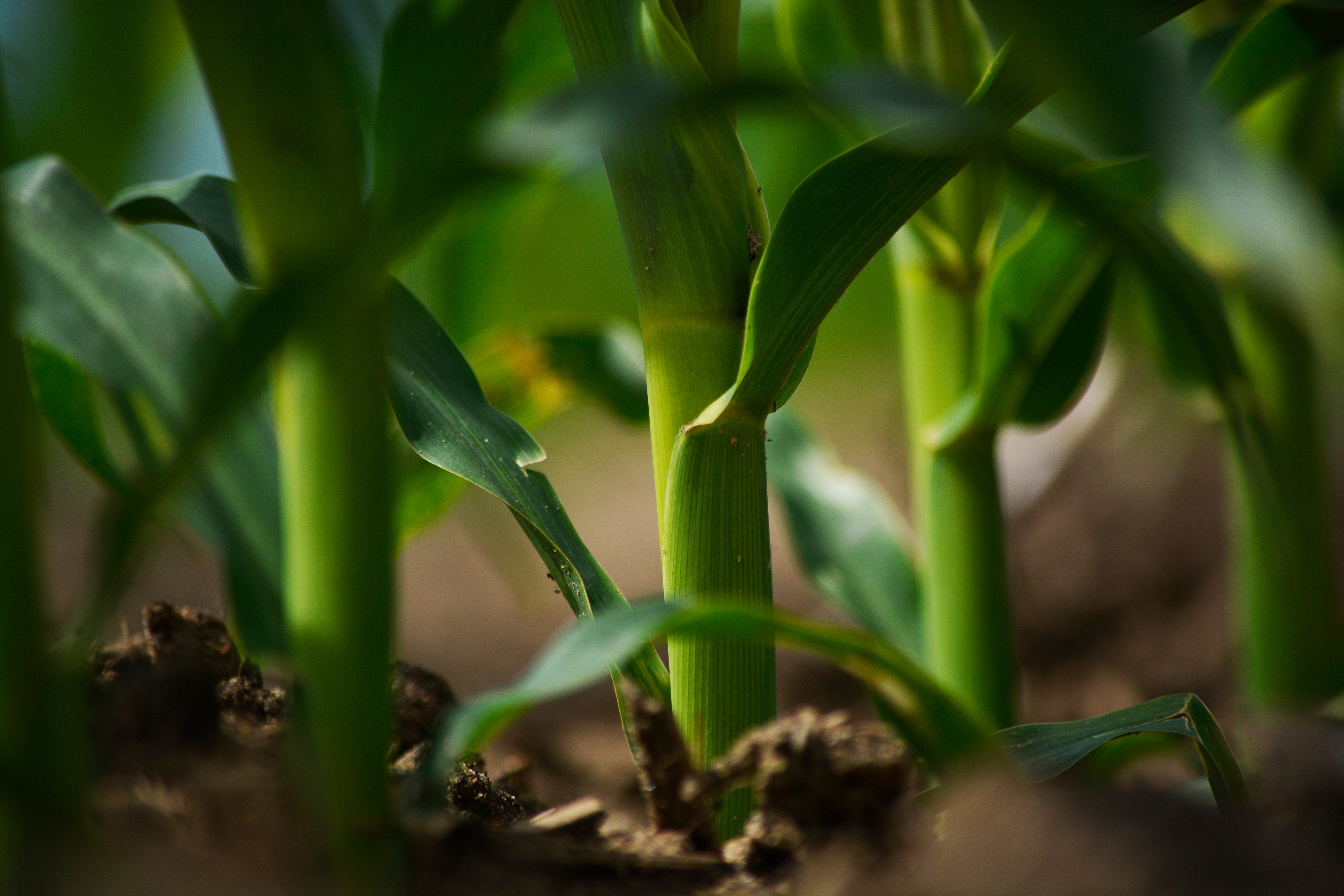What is the goal of starter fertilizer? Many in the industry will say it is simply to provide extra nutrition and get our crop “off to a good start.” But, can we get more specific in our goal for what that starter pass is intended to do? Instead of focusing on “getting off to a good start,” what if we focused on a quantitative figure as a measurable goal in terms of aboveground V6 plant mass?
Even if this year brings adequate rainfall, we know there are areas in many fields that run out of water every year. Preparing for that stress is a critical factor in understanding how starter fertilizer applications can help us meet our yield goals.
From “Starter Fertilizer” to “V6 Plant Mass”
In our article series last summer, “The Bout with Drought,” we highlighted several key factors on why roughly 30% of our acres experience these dry conditions every year. Areas higher in landscape position and usually lower in organic matter tend to have a lessened ability to mineralize nitrogen and sulfur contribution and typically are not able to build a robust plant by V6. These areas tend to struggle to get the canopy closed within 45 days, especially with a lack of rainfall.
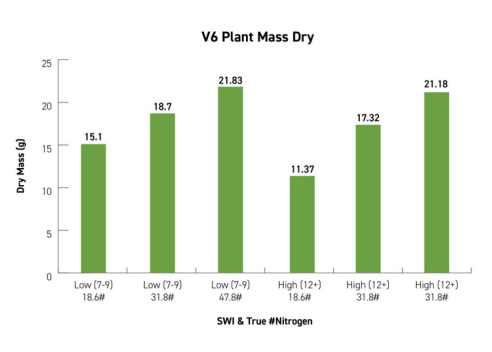
In 2023, Advanced Agrilytics conducted research evaluating increasing nitrogen rates at planting. Although there are many ways to apply this N, there is no denying that banded nitrogen at planting via a variable rate 2×2 application primarily focused on early season nitrogen and sulfur demand proved valuable.
- Trial goal: Achieve aboveground V6 plant mass between 19-21 grams in all environments and expedite the race to canopy within 45 days
- Trial premise: As aboveground V6 plant mass increases over 14 grams, corn yield potential drastically increases to 260-bushels and risk of sub-200 bushel corn dramatically decreases*
- Trial methodology: Determine organic nitrogen contribution spatially throughout the field to create a variable rate starter prescription. Compare variable rate application with 7- gallon and 12-gallon flat rate application of same 80/20 (UAN28/ATS) product in both water-limited (low SWI) and saturated (high SWI) environments
- Trial outcome: Ensuring every sub-acre receives adequate nitrogen / sulfur achieved V6 plant mass upwards of 20-21g of aboveground plant mass across the VR strip in both the water-limited and saturated environments. Increasing V6 corn mass improves corn yield primarily by decreasing downside risk. The increased rate of gain also supports our thought of a larger V6 plant being able to more effectively take advantage of additional management decisions (fungicide applications and such) later in the growing season
*based on 2015 Advanced Agrilytics trial data
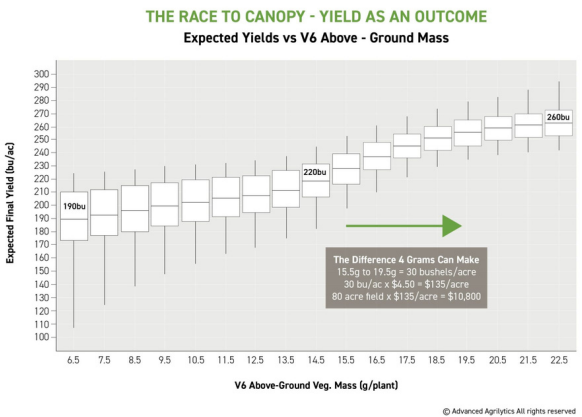
The Largest V6 Plant Wins the Race
The trial outcomes were not because of an increase in overall nitrogen applied in the strip but rather a reallocation of the total nitrogen program towards the 2×2 application. Applying more N with the planter allowed for increased N uptake because of adequate early-season soil moisture, allowing the strip to close the canopy before experiencing drought conditions. The nitrogen that was moved to the planter was subtracted from the sidedress pass that supplied the crop with its season-long nitrogen source.
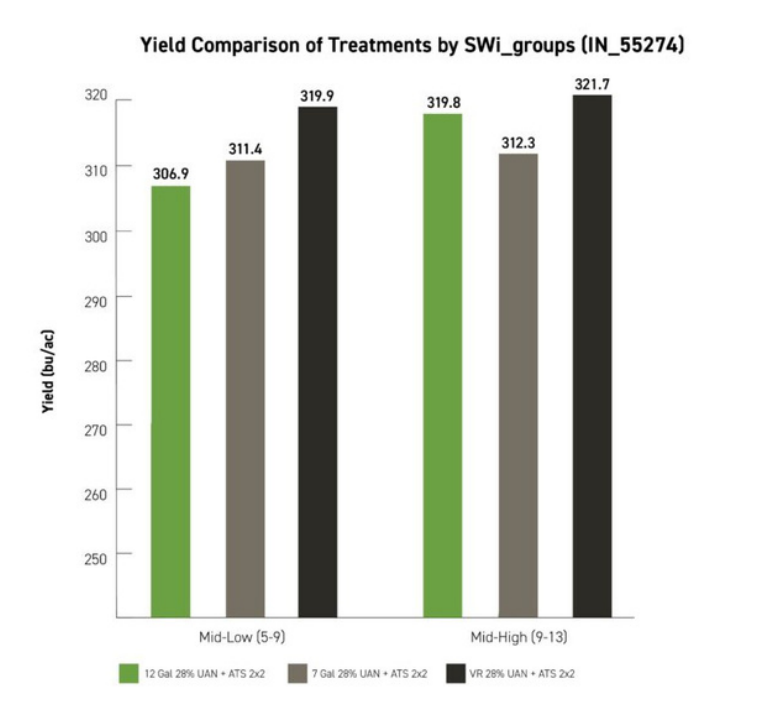
The consistent 20-21 gram V6 plant mass across all environments achieved with the VR starter resulted in outstanding yield consistency across those same environments. Yields were excellent, with very little deviation. In the areas of the field with <2%OM, we saw upwards of a 10 bu/ac advantage in the VR strips compared to the 7-gallon flat strips.
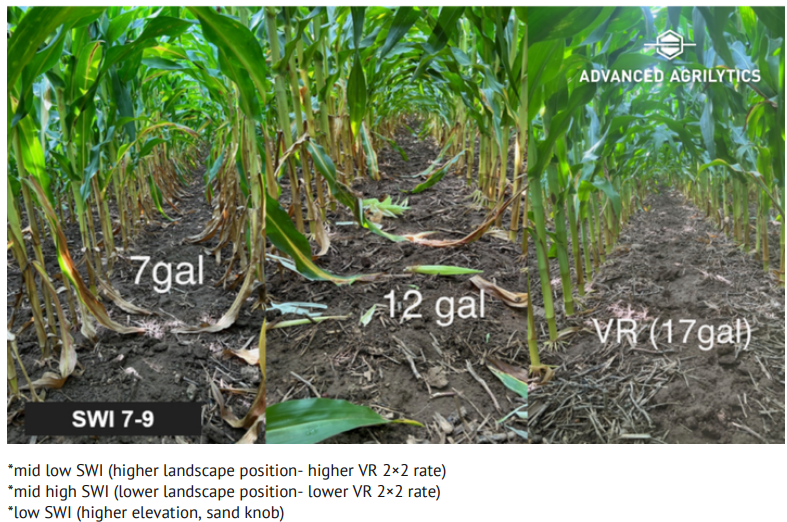
Tying V6 Plant Mass to a Yield Outcome
Reallocating nitrogen and sulfur to yield potential comes down to understanding sucrose allocation and the
corn plants’ ability to build sucrose storage as we enter grain fill. The photos below depict the influence of a
large sucrose reserve in all environments. The plants collected on the knob in the VR 2×2 strip built a bigger
sucrose reserve to use through grain fill to build kernel depth.
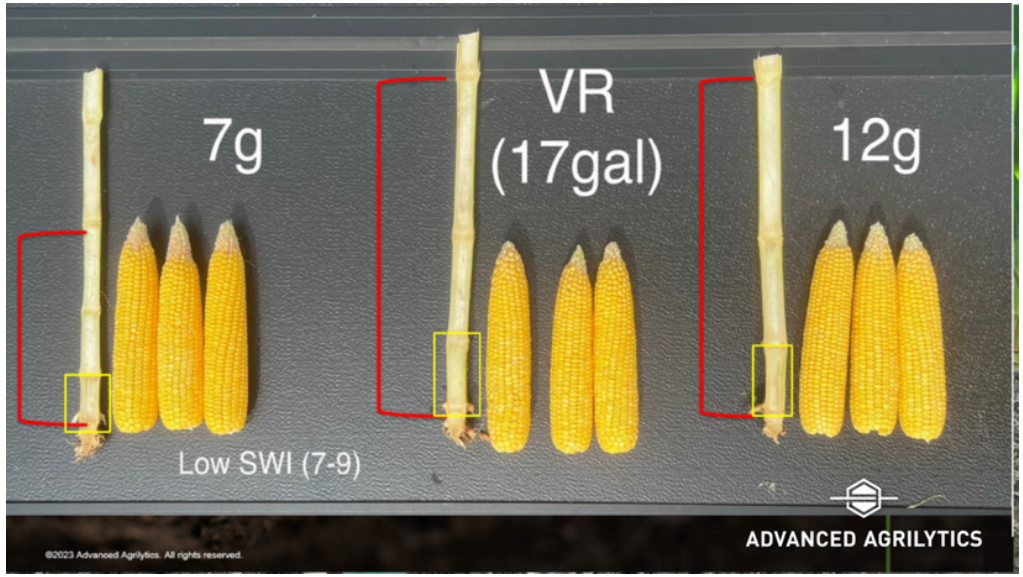
From the canopy view, even at R5, the plants were not showing any symptoms of nitrogen deficiency, suggesting there was plenty of sucrose reserve to support maintenance respiration. In the 7- and 12-gallon strips collected in the same environment, we can notice the subtle cavitation beginning in the lower internodes, suggesting the absence of sucrose that was already used to fulfill the maintenance respiration requirement. This could lead to kernel abortion like you see on the tips of the collected ears in the 7- and 12-gallon strip.
Overall, we can see that nitrogen / sulfur prescriptions provided the early “off to a good start” our corn crop needed to achieve yield success. Remember, this wasn’t additional nitrogen, just a more specific focus on the nitrogen/sulfur demand by environment at planting.
Let’s Get Your Prescription Started
As we look ahead to the 2024 season, how are you planning to address those acres that tend to dry out first? The acres that are higher in landscape, have less organic nitrogen and sulfur mineralization capabilities, and are further from the water table?
Shifting from the adage “off to a good start” to “achieving the greatest V6 plant mass possible in all environments” equates to a higher yield potential.
Ultimately, Mother Nature won’t tell us what curve balls she will throw at us this year. All we can do is plan with the information and understanding we have of every sub-acre. Connect with our agronomic team in your area, to start an assessment that moves your worry from rainfall to variable rates that drive a win in the race to canopy
